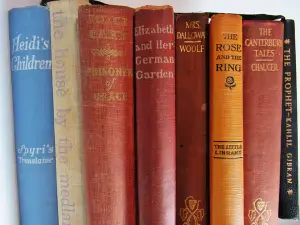A Guide to Selling Books on Amazon
Amazon is a great platform for selling books, with millions of customers around the world ready and waiting to buy from your own Amazon bookstore. But to be successful when selling books on Amazon, you have some choices to make before you launch your bookstore. First off, choose your niche. There are endless types of books available – selling books on Amazon is a unique market. There are many ways you can take to make your e-commerce venture a success. Two main markets for selling books on Amazon are collectible books and textbooks.
Selling Textbooks on Amazon
 When it comes to selling books on Amazon, textbooks can turn a huge profit. Textbook buyback and resale is a popular business among entrepreneur-minded college students – buying textbooks at the end of the semester and reselling them on Amazon can be an extremely lucrative venture.
When it comes to selling books on Amazon, textbooks can turn a huge profit. Textbook buyback and resale is a popular business among entrepreneur-minded college students – buying textbooks at the end of the semester and reselling them on Amazon can be an extremely lucrative venture.
One of the pros of selling textbooks on Amazon is that they are much easier to find, list and price when compared to collectible books. Textbooks are already listed in Amazon’s catalog due to being modern and more well-known. When you have an antique book with a faded copyright date and no dust jacket, determining the item details can be quite a feat to accomplish.
Condition is Key. Pay extra attention to the condition of every book you list. Listing a book as “Like New” when it is used is an error that could get your seller account suspended. When you provide the item details, be sure to note everything about the book’s condition – marks or scratches on the cover, missing or ripped pages, writing on the inside or outside of the book, and anything else visible.
Defining ISBNs.On any particular textbook, an ISBN is a code that determines the specific edition you are selling. Usually, the ISBN is 10 or 13 digits, sometimes containing a hyphen. You can find the ISBN on the textbook’s copyright page on the interior, on the back, or with the barcode. It’s important to get the ISBN exactly right when you list a textbook so your customers know they are getting the right edition.
Selling Collectible Books on Amazon
Are you a literature lover with a huge collection of novels? Selling antique and collectible books online may be the market for you. Visit thrift stores and garage sales to find unique old books, novels, paper ephemera, and other vintage literature that customers won’t be able to find elsewhere. By selling books on Amazon that are difficult to purchase in a store – or from other sellers – you’ll set yourself apart right off the bat with a great niche product.
A Glossary of Antique Book Terms

If you choose to sell antique or collectible books, it’s important to know how to describe your item. A book’s condition varies widely, from “Like New” to ragged, ripped and torn. When you’re selling books on Amazon or eBay, knowing the terminology used to describe the different parts of an antique book is essential. Here is a brief rundown of the terms used to describe the various physical parts of a book.
Advanced Copy or ARC (Advanced Review Copy):
A copy of the book that was published before the known publication date for reviewers and sellers.
Backstrip:
Material that covers the spine of the book.
Binding:
The complete cover of the book, which includes the backstrip/spine.
Book Club Edition (BCE) or Book of the Month Club (BOMC):
A specialized reprint of the book’s 1st Edition. Some Book Club Editions may be condensed.
Covers:
The front, back, and spine of the book – i.e., the complete binding of the book.
Dust Jacket (DJ):
Hardcover books are sold either with or without a Dust Jacket. A Dust Jacket (DJ) refers to the paper artwork that covers the book’s exterior. Included Dust Jackets make hardcover books much more valuable. Depending on the condition of the Dust Jacket, the book’s value increases by about 35-100%. A book in excellent condition with a dust jacket can double in value.
1st Edition:
The first available printed copy of a collectible book.
Foxed / Foxing:
Foxing refers to a chemical reaction that causes brownish staining or spotting of the papers. Foxing is usually seen in older books (19th century or before) with steel engravings.
Fray:
Loose threads in a book with a cloth overlay emerge from the cover or backstrap.
Frontis / Frontispiece:
An illustration at the beginning of a book usually appears opposite the title page.
Gilding:
Refers to a decorative overlay to the book’s cover or binding, usually gold or silver, to give it a more alluring appearance.
Glassine:
A transparent covering is used to preserve the book’s exterior, covers, and binding.
Illustration:
Any type of picture, design, graphic, map, or diagram printed within the text of the book. Note the book’s illustrator along with the author.
Impression:
This term refers to the number of copies during a particular press run
Library-Bound:
A book produced for libraries or schools; generally with a more durable binding
Limited Edition:
A restricted publication with a small amount of copies for a specific audience
Marbled:
Paper decorated with an imitation marble pattern.
No Date (ND):
The book shows no publication date, or the date is unknown.
Paperback:
A soft cover book with a paper exterior
Wrap/Wrapper:
The outer cover of a paperback or pamphlet. The wrapper only applies to paperbacks and pamphlets – this isn’t the same as a dust jacket on a hardcover book.
Building a Successful Online Bookstore
You don’t need to pick one type of book to sell – you can create a successful online bookstore by selling books on Amazon whether you choose antique books, textbooks, or anything else. For any bookworm, creating an online bookstore by selling books on Amazon can be an interesting, fulfilling, and profitable e-commerce business that can turn into your full-time job.
